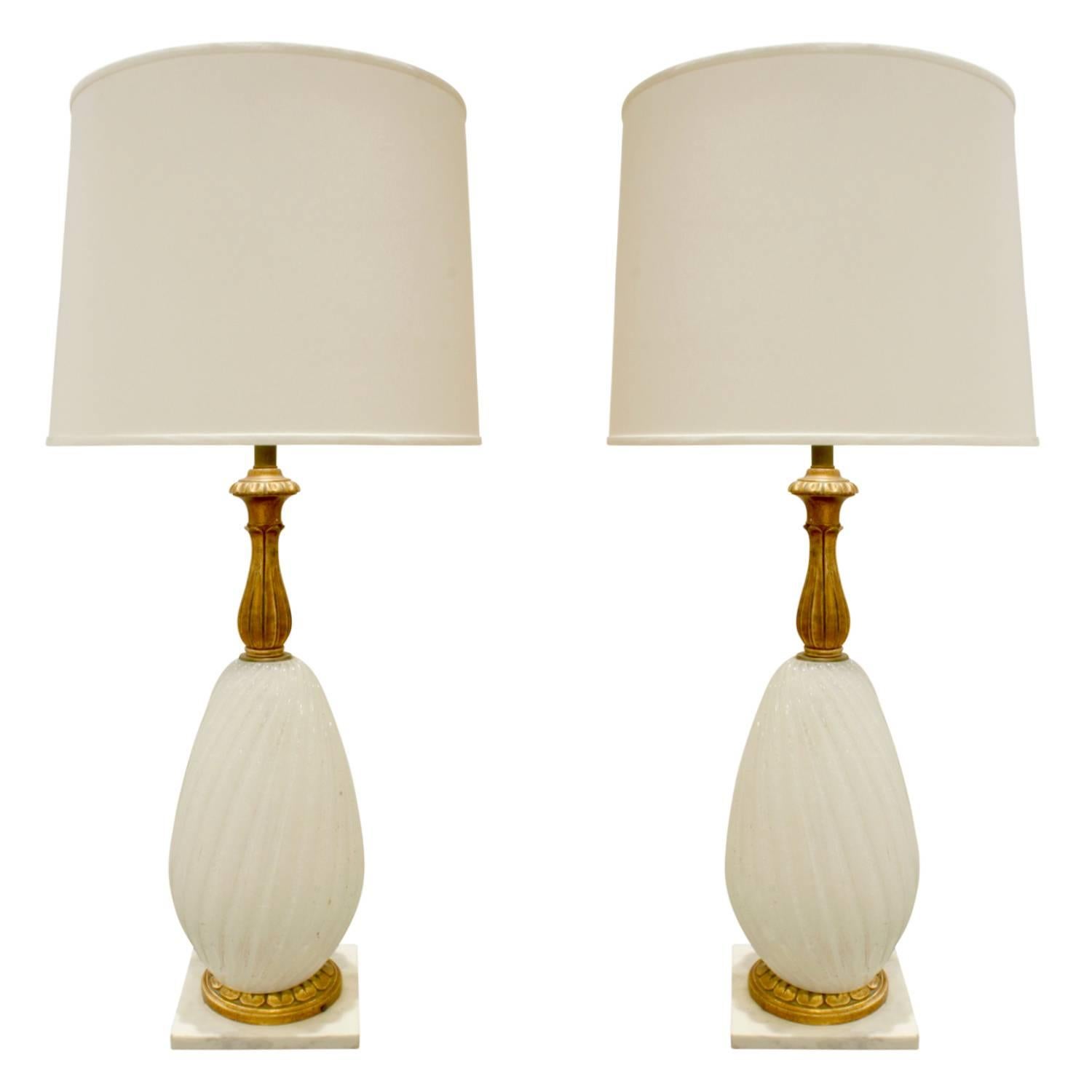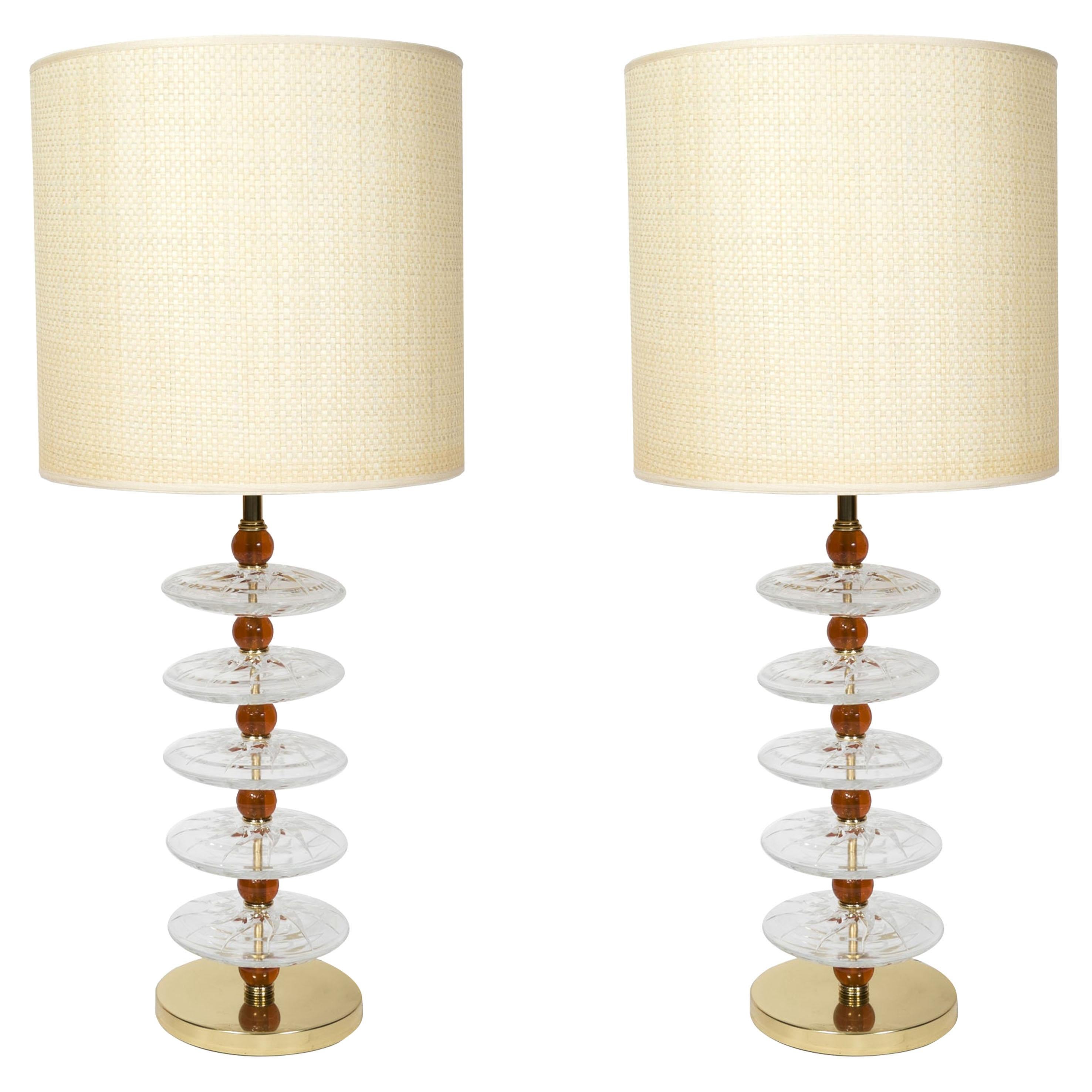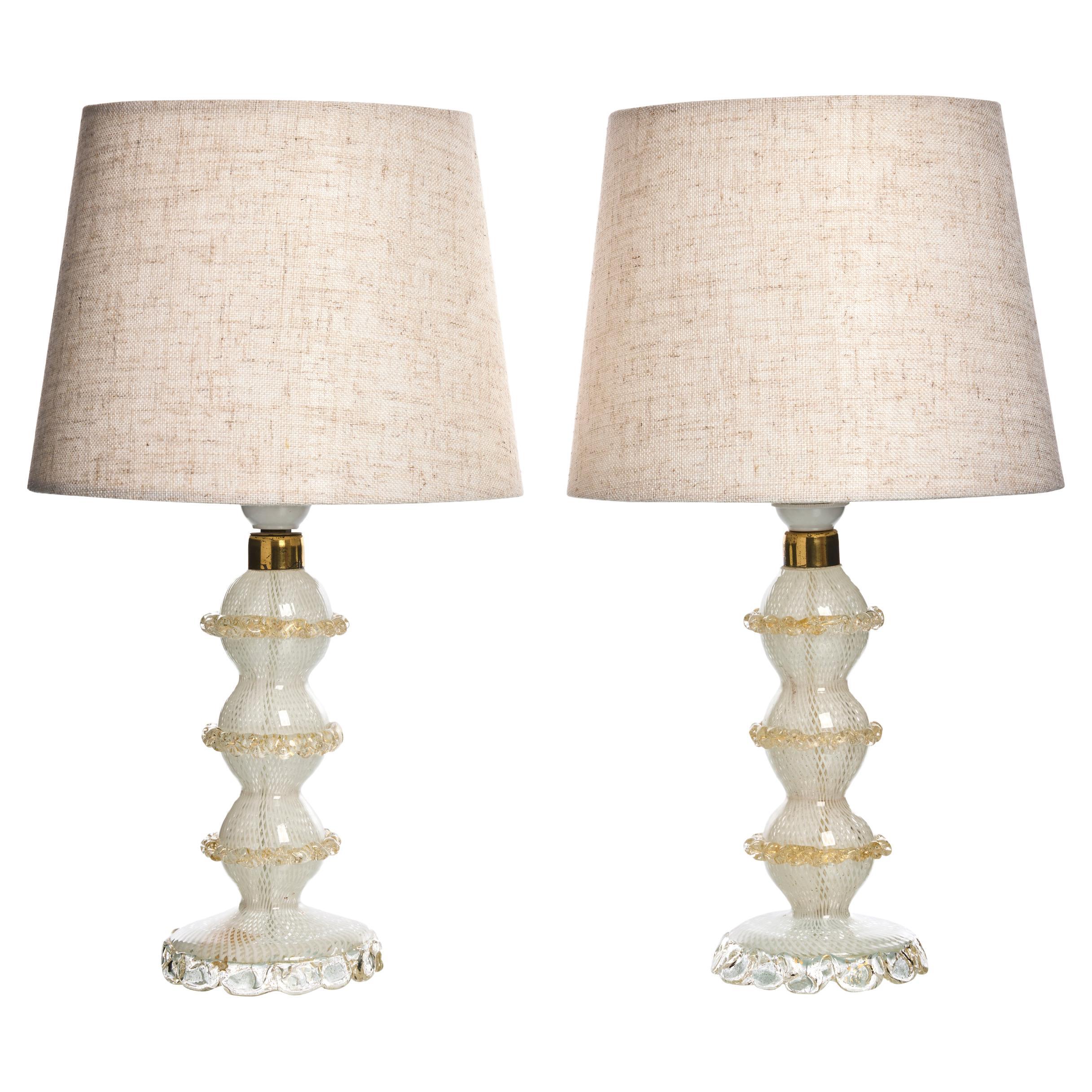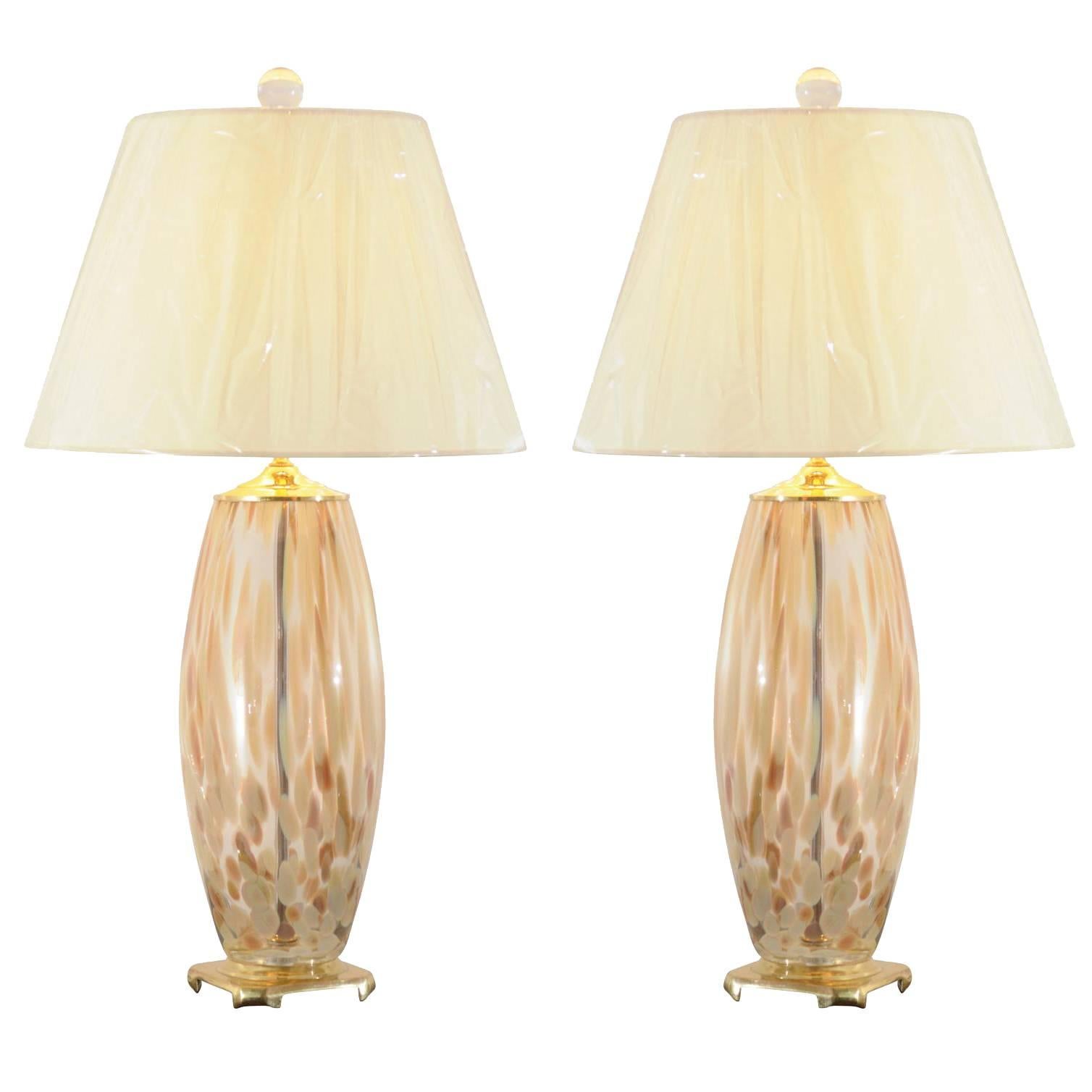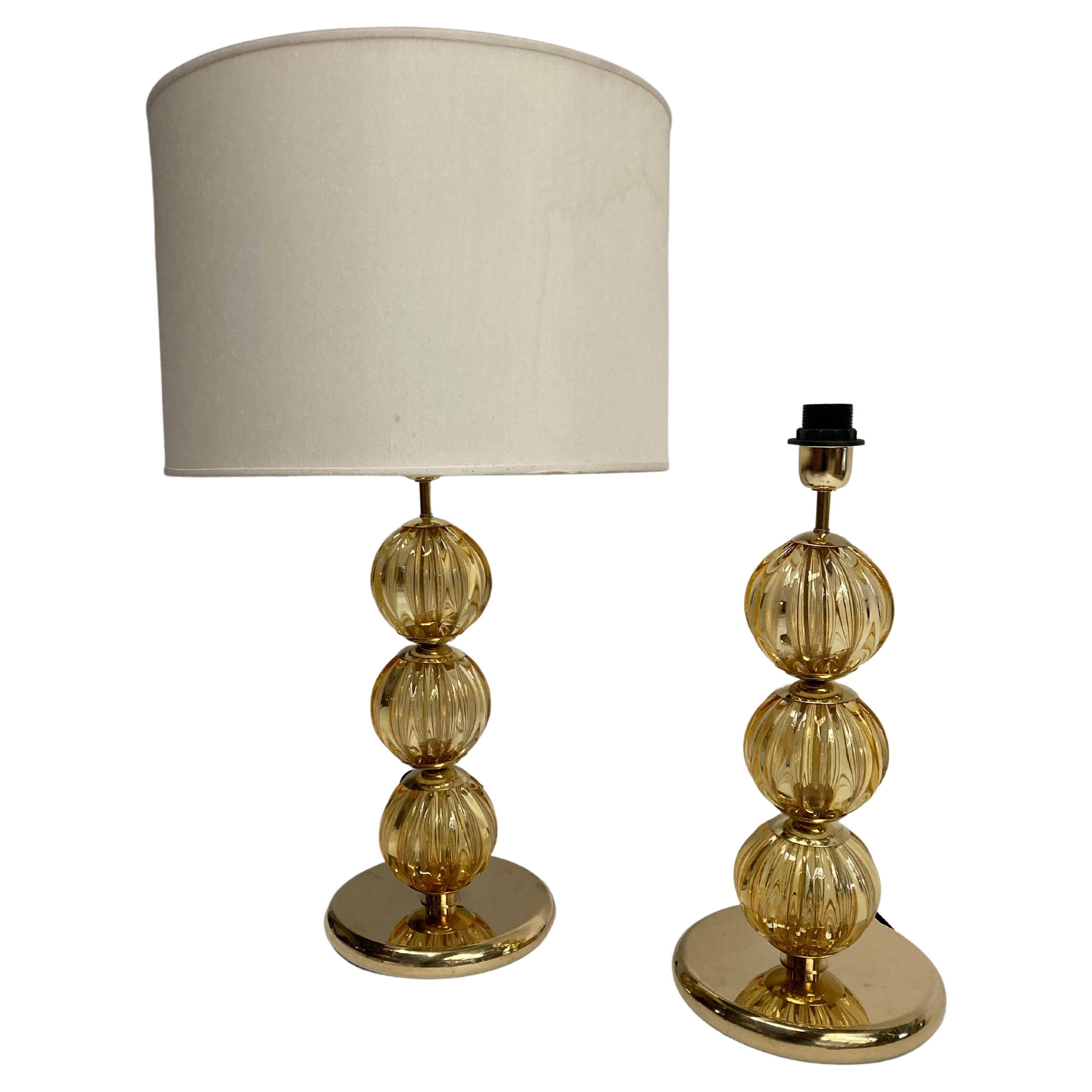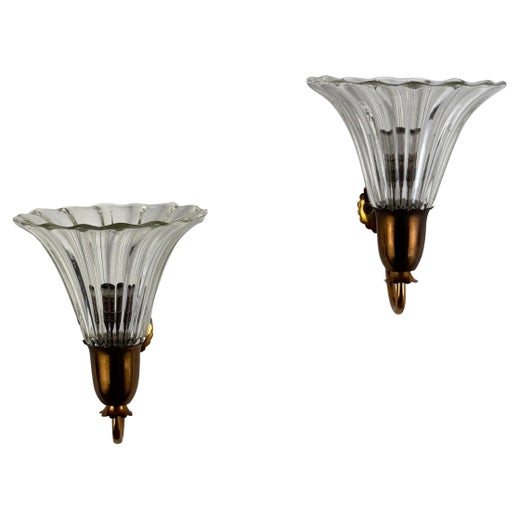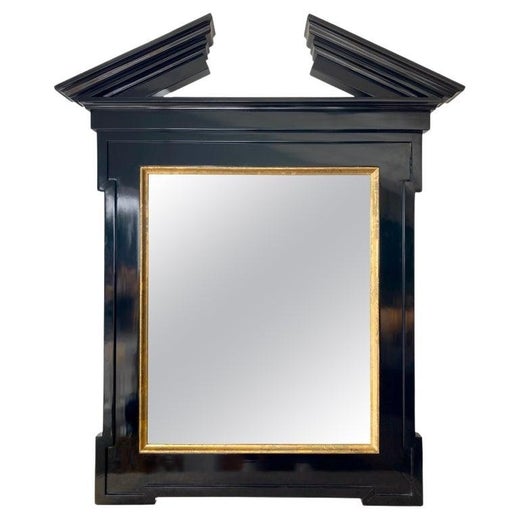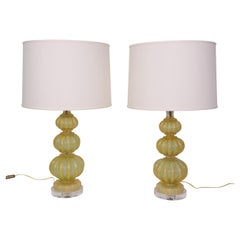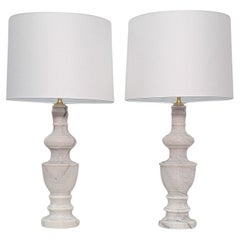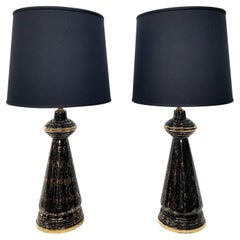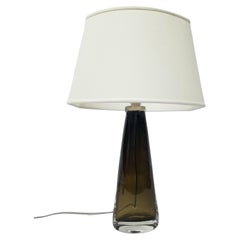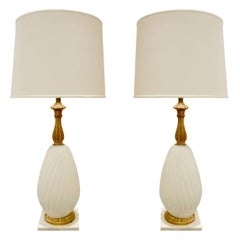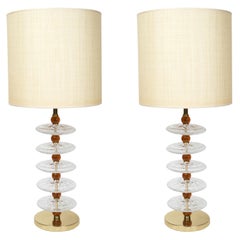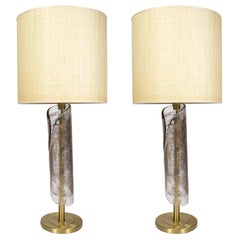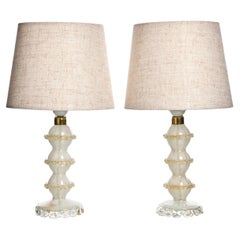Seguso for Donghia Murano Glass Lamps with Gold Dust and Gold Aventurine - Pair
About the Item
- Creator:
- Dimensions:Height: 32 in (81.28 cm)Diameter: 15.5 in (39.37 cm)
- Power Source:Plug-in
- Voltage:110-150v
- Lampshade:Included
- Style:Modern (Of the Period)
- Materials and Techniques:
- Place of Origin:
- Period:1980-1989
- Date of Manufacture:1980s
- Condition:Wear consistent with age and use. New shades.
- Seller Location:Miami, FL
- Reference Number:1stDibs: LU1958343167502
Archimede Seguso
Archimede Seguso redefined a 650-year family history of Murano glass-making with brilliance and novel techniques, elevating him to an exemplar for the maestros of his time as well as for future generations of glassmakers. This next generation included his sons and grandsons, who carried on and further expanded the family legacy of Venetian art glass. The survival and revival of traditional glassblowing combined with unique design are the legacies left behind by a master.
Seguso grew up in the family furnaces of the Soffieria Barovier Seguso and Ferro, where his training began at age 11. By the time he turned 20, he was a maestro in his own right, joining the family business as a partner.
In 1933 the company changed its name to Seguso Vetri D’Arte, and Seguso gained sole control. He collaborated with designers Flavio Poli and Vittorio Zecchin, which allowed him to achieve artistic sovereignty leading to the opening in 1946 of his own furnace, Vetreria Seguso Archimede. There, he could explore his design ideas with creative freedom. In 2007, the 23rd generation of Seguso glassmakers took the lead at Seguso Vetri D’Arte. Brothers Gianluca, Pierpaolo and Gianandrea Seguso carry a six-century dynasty of Seguso glass into the 21st century.
Archimede Seguso’s art glass pays homage to tradition. Seguso studied and mastered techniques from centuries past, but he also pioneered innovative approaches, such as submersion and unconventional color constitutions. He awarded future generations with stunning and unprecedented effects, such as ribbed textures, rings, needle shapes and the appearance of embedded objects.
A lifetime of achievement created by Seguso is honored in museums worldwide, such as the Victoria and Albert Museum in London, MoMA in New York and Museum Kunstpalast in Dusseldorf, to name a few. His exhibit resume spans decades, beginning with XX Biennale, Venezia, in 1936. It includes a 1989 exhibit of “Il Maestro dei Maestri” at Tiffany & Co., New York, and 2013 exhibitions at Musée Maillol in Paris and Museo della Basilica di San Marco in Venice.
On 1stDibs, find vintage Archimede Seguso glass, decorative objects, lighting and mirrors alongside a collection from his brother Angelo Seguso and his grandsons’ firm Seguso Viro.
Donghia
With distinctive style touches like gray flannel upholstery and overstuffed seating, American designer Angelo Donghia (1935–85) was a visionary leader of bold interior design and furniture in the 1970s and ’80s. Although Donghia lived only to age 50, by the time of his death from AIDS-related pneumonia, his name graced numerous furniture and decor companies, in addition to his own interior designs.
After graduating from Parsons School of Design in 1959, Donghia joined the interiors firm of Yale R. Burge, and his star rose quickly from there. By 1963, he had been appointed vice president and in 1966, partner — a move that came with a name change for the firm to Burge-Donghia Interiors. In 1968, he founded the fabrics and wall coverings company & Vice Versa, and in 1978 he founded Donghia Furniture. With this holistic approach, Donghia was able to oversee nearly every element of an interior design project, which, for him, spanned everything from corporate offices (notably PepsiCo’s world headquarters in Purchase, New York) to the Metropolitan Opera Club at Lincoln Center to residential interiors for clients such as Diana Ross and Ralph Lauren.
After he inherited Burge’s firm, he continued to develop its reach as Donghia Associates. He opened a series of showrooms around the country to offer his designs to a wider audience, who loved the company’s marriage of minimal forms with luxe materials. His silver-foil ceilings, mixing of eclectic textile patterns and plush furniture set trends and, through mass marketing, influenced the direction of American interior design.
“I feel that I’ve developed my own style that is as classic and minimal as the ’30s style it reflects,” the designer once told New York magazine. In 2015, the retrospective “Angelo Donghia: Design Superstar” at the New York School of Interior Design chronicled his influence on all facets of modern interiors, from furnishings to wall coverings. It’s an approach that still resonates today. Donghia continued to operate as a company after his death, acquired by the Rubelli Group in 2005. After it filed for bankruptcy in 2020 and closed its showrooms, its name, designs, archives and inventory were acquired by Kravet.
Find authentic Donghia furniture today on 1stDibs.
- ShippingRetrieving quote...Shipping from: Miami, FL
- Return Policy
More From This Seller
View All20th Century Italian Mid-Century Modern Table Lamps
Art Glass, Blown Glass, Lucite
20th Century Italian Neoclassical Table Lamps
Marble, Carrara Marble, Brass
Vintage 1940s American Art Deco Table Lamps
Brass
Mid-20th Century Swedish Scandinavian Modern Vases
Glass, Art Glass, Blown Glass
20th Century American Mid-Century Modern Table Lamps
Glass, Wood, Silk
20th Century Italian Mid-Century Modern Table Lamps
Metal, Brass, Enamel
You May Also Like
Vintage 1950s Italian Mid-Century Modern Table Lamps
Marble
Antique 1770s Italian Table Lamps
Glass
Vintage 1980s Italian Table Lamps
Brass
Vintage 1960s Italian Mid-Century Modern Table Lamps
Gold Leaf
Vintage 1970s Italian Mid-Century Modern Table Lamps
Brass
Vintage 1970s Italian Table Lamps
Brass
